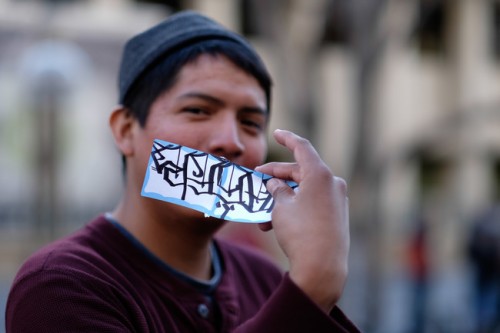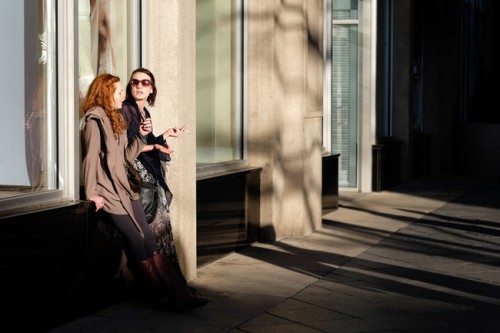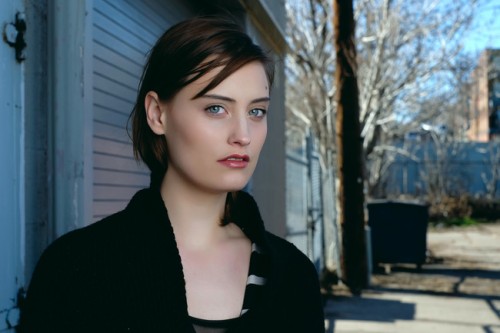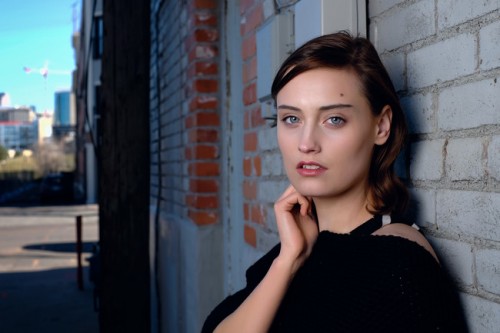Fuji X-T1 Preview and Image Samples
I have been shooting with the Fuji X-T1 for the past several weeks and I must say, I am just blown away by what this little camera can do. While I will be working my way to a review fairly soon, I wanted to provide a quick summary of my thoughts so far on the X-T1, along with some sample images using the 35mm f/1.4 and 56mm f/1.2 lenses. Ever since I received the X-T1, I just cannot stop myself from taking it every time when I go outside. Pretty much everything about the camera feels right to me – from the amazing controls and dials on the top, to the fast and responsive autofocus and the huge electronic viewfinder (EVF), making the camera a pure joy to use.

I have been a harsh critic of Fuji’s continuous autofocus system when reviewing the previous generation cameras, so when I heard of the autofocus improvements on the X-T1, I decided to give AF-C another try and see if it has improved or not. Indeed, I am happy to report that the continuous autofocus capability of the X-T1 has been completely revamped. I photographed my kids running towards the camera in AF-C mode and although the hit ratio is still not the same as I would get with my DSLRs, I must say that it is far better than pretty much any other mirrorless camera I have tried to date, maybe with the exception of the Nikon 1 system. I was surprised to see that about 12 shots out of a sequence of 15 were in good focus using the Fuji 56mm f/1.2 lens, which is pretty remarkable. My only gripe is that there is still some weird “probing” of focus going on continuously in the viewfinder, making it look like the resulting images will be completely out of focus. Somehow though, the Fuji AF system changes its behavior completely when the shutter button is pressed – the camera goes into a quick focus change mode and instantly acquires good focus. This might seem odd at first, but it really does work! I think the continuous probing is necessary for the autofocus system, but I wish Fuji figured out a way to show less of that in the viewfinder and perhaps only go a couple of steps back and forth, instead of making it seem like the image will be out of focus.
If Fuji continuous delivering such improvements to the continuous autofocus mode, we could be pretty close to getting to the point, where mirrorless cameras become excellent alternatives to DSLRs for sports and wildlife photography! Obviously, native telephoto lenses are still practically non-existent, but we are seeing some great options for the Micro 4/3 mount and Fuji should be releasing some good telephoto lenses in the next year or two. Continuous autofocus is far from being perfect, but we are slowly getting there for sure…
As expected, the regular single focus (AF-S) mode works really well, even with the Fuji 56mm f/1.2 lens. If you have used Canon f/1.2L lenses, you know how hard those can be to focus. I expected the 56mm f/1.2 to be a hard lens to use, but boy, this lens is just amazing in terms of not just optical quality, but the speed and reliability of autofocus! Based on my 3+ weeks of testing the lens, I bet you will find it hard to believe that the lens actually focuses better than most Nikon f/1.4 lenses and way better than the Canon 50mm or 85mm f/1.2L lenses. Whether shooting outside in bright light or shooting indoors, the 56mm f/1.2 just locks on pretty much every single time – and that’s with me shooting it at f/1.2 90% of the time. Autofocus does get slower in low-contrast situations indoors, since it switches to contrast-detect mode, but it is still pretty amazingly accurate. If shooting people, you will be surprised by what the camera can do when Face Recognition is turned on. The camera locks on and tracks the subject’s face really well – much better than my Nikon DSLRs!
Here is an image of my daughter, who is constantly on the move (captured with the Fuji 56mm f/1.2 lens):

And here is an image that I shot in AF-S mode using the same lens:

The subject saw me with the camera on the street and asked me to take a picture of him. I turned his way as he paused for a second and took a quick snap, focusing on what he was showing me. All this happened in a matter of a second, maybe even less. I thought the image would turn out blurry, but as you can see, it is perfectly sharp. Here is another shot, of our very own Charles Hildreth on a windy day, which I also captured quickly:

Amazingly, the camera knows that it has to focus on the closest eye of the subject, so I did not have to fine tune anything – the camera did that for me.
Here is a shot of two women talking on the street, which I captured while walking:

I think street photographers will be extremely pleased with the performance of the X-T1.
And one more shot of moving people:

If you are wondering what can be done with this camera when using creative lighting, here are some shots of a model that I captured using the Profoto B1 light and a medium-sized Profoto octabox:

I did not have an ND filter with me to get a more balanced shot with a proper background exposure, but it is still not bad for the slow 1/180 sync speed. I wish Fuji increased the sync speed to 1/250, since that would certainly make a difference for this type of photography. If you want to blur the background with flash though, an ND filter is a must!

Another area of potential improvement is the ability to shoot RAW when using ISO 100. I don’t particularly care for really high ISOs above 6400, but Fuji should definitely add that capability to ISO 100. I needed to really drop the sensitivity down when shooting at f/1.2 and completely forgot that the camera would only give me JPEG images! This has been my complaint with Fuji for a while, so I really hope to see RAW files beyond the base ISO of the camera in the future firmware updates and camera releases.

Lastly, the manual focus capabilities of the camera will simply blow you away. I love the ability to split the EVF into two and showing a zoomed in version on the right. Focusing is so darn easy – nothing like looking at the DSLR OVF and guessing! I showed this to Charles Hildreth and he was just blown away.

In short, the Fuji X-T1 is the best Fuji camera to date. Simply amazing! More to come.













.gif)





